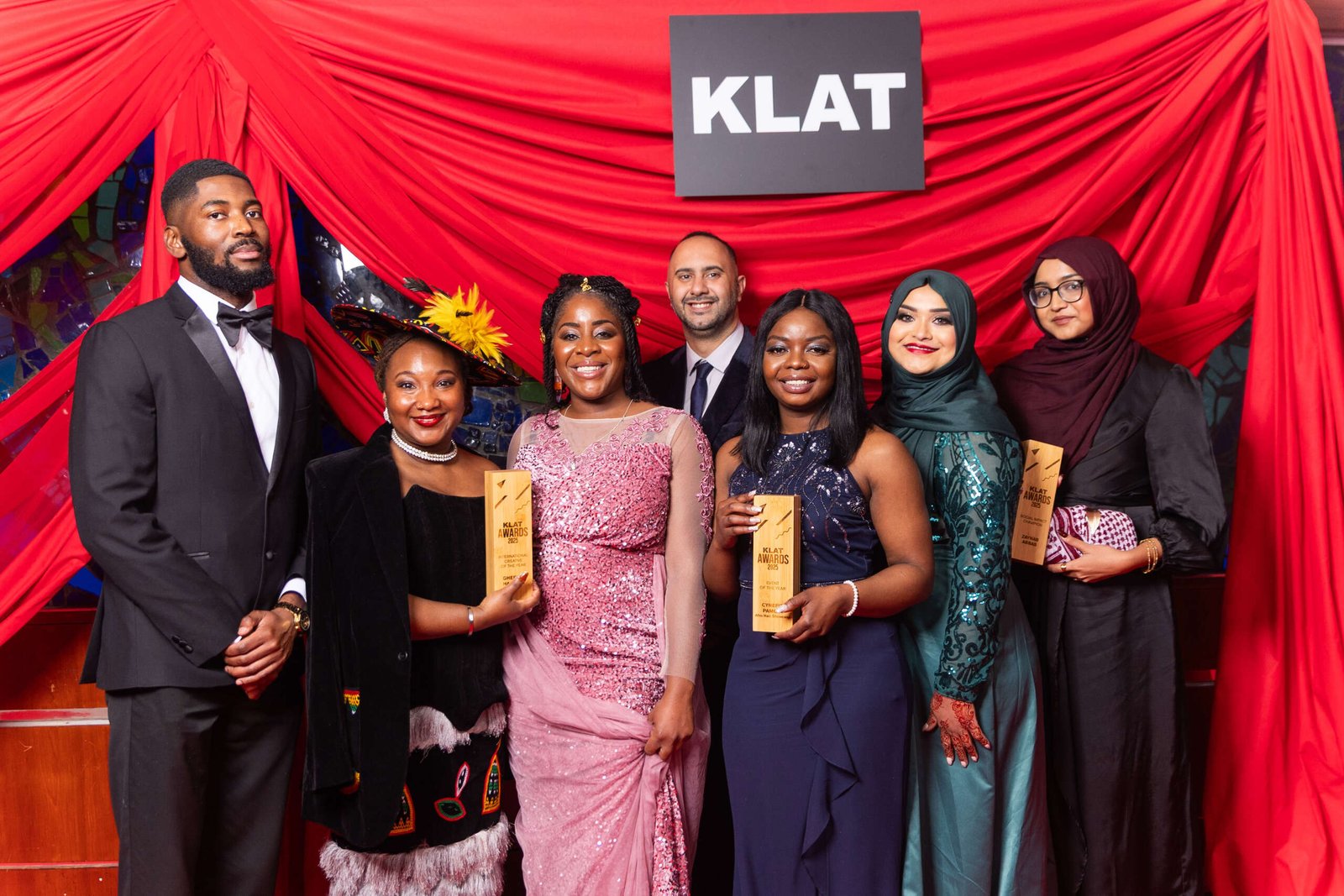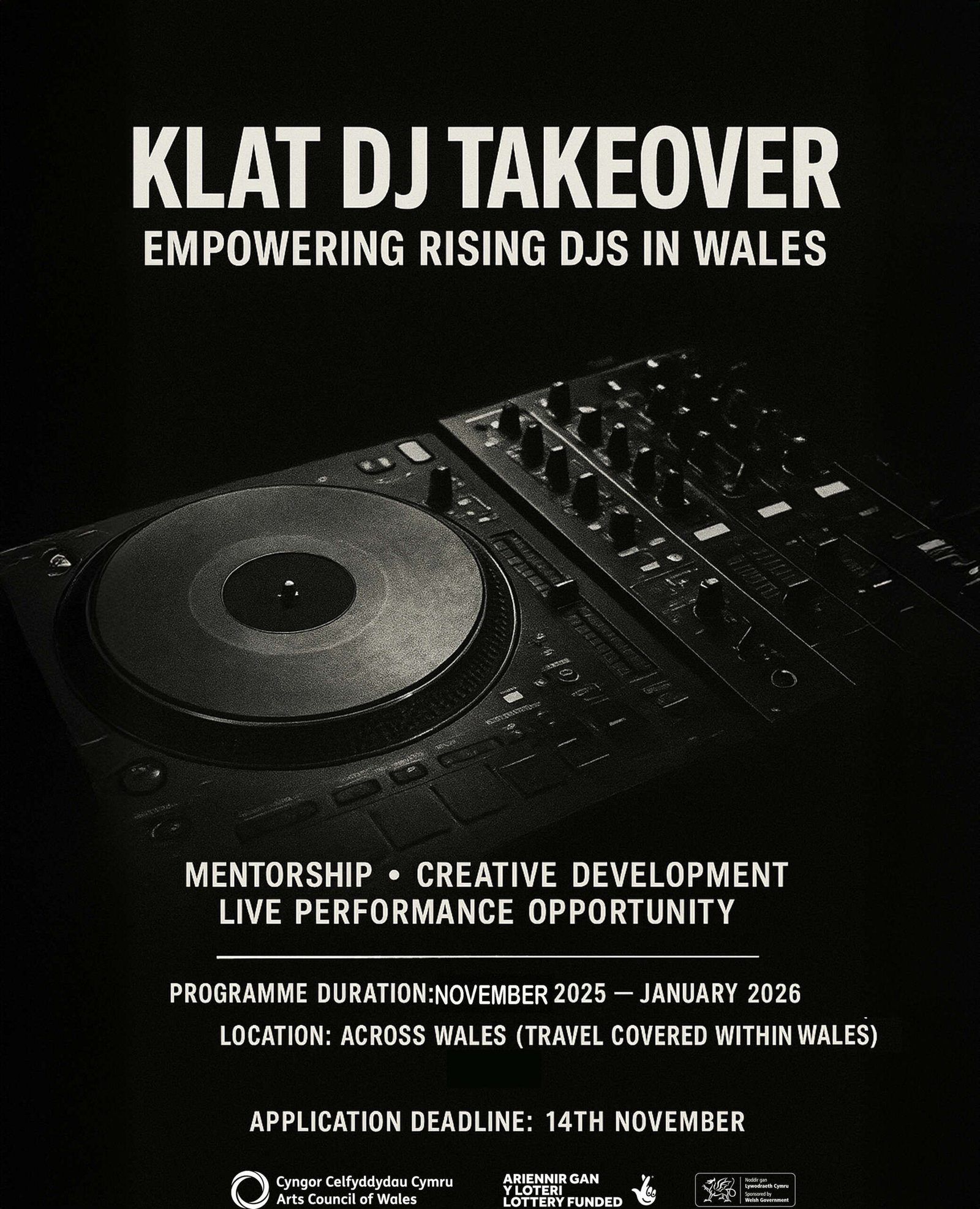I’m creating art that is healing, I’m telling stories, and opening up conversations about identity, belonging, and possibility,” says Bermudian artist Gherdai Hassell, a KLAT Awards finalist for International Creative of the Year whose work feels like a bridge between memory and imagination. When she describes herself as “pursuing her wildest dreams,” it’s her reality. “Right now, my wildest dream looks like living a creative life on my own terms,” she says. “One rooted in freedom, joy, and meaningful connection. I get to wake up every day and do what I love. And that is an absolute blessing.”
Gherdai’s practice is deeply personal and reflective. Her art explores identity, memory, and nostalgia, concepts that began to matter as she started questioning her own sense of belonging. “Growing up in Bermuda, it’s a very small place, but because of that contrast, I always felt connected to a larger story,” she explains. “In my work, I use the layering of collage as a metaphor for the layers of identity and meaning. Memory and nostalgia help me uncover the fragments of history that shape who we are today.”
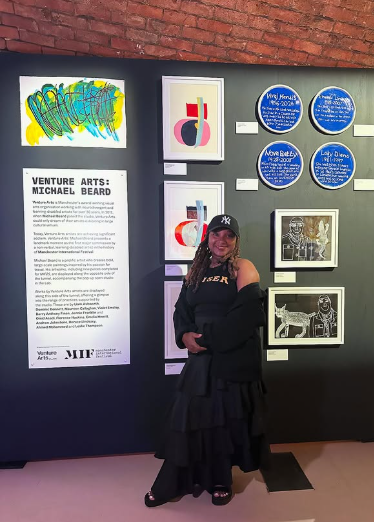
Her work, which has been exhibited across continents, often feels like an act of reclamation, of piecing together what was fragmented. “My work became a way to reconstruct those stories, to honor what was lost, and to imagine what could be reclaimed for the future,”
Bermuda gave her rhythm, storytelling, and a love for community; China gave her discipline and philosophy. “Studying contemporary art in China completely changed my perspective, it challenged me to see art as discipline and philosophy. That combination, an island soul with a global vision is very potent,” she says. “It deeply informs how I approach making, teaching, and living.”
In much of her work, Black women stand boldly at the center. “Centering Black women is like a love letter to them,” she says with a smile. “Growing up, I didn’t often see images of Black women portrayed with dignity, complexity, or softness. Through my work, I aim to create a visual language that celebrates our presence and humanity, but make it fashion. So the work is a celebration of that.” She hopes viewers feel “seen, affirmed, and inspired,” understanding beauty itself as a form of resistance and healing.
Her project What Remains to Be Seen became a turning point.
“I was tracing ancestral histories connected to the transatlantic slave trade. I reimagined the identities of 350 people from Bermuda’s archival enslaved registers. In that process, I realized that identity is layered and evolving, The act of reconstructing fragmented narratives taught me that healing happens through reimagining. We are not just descendants of trauma, but of creativity, strength, and continuation.”
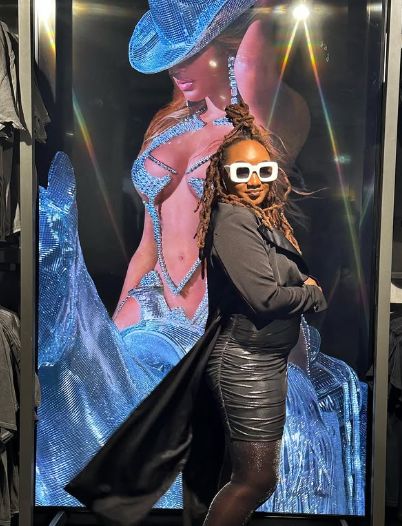
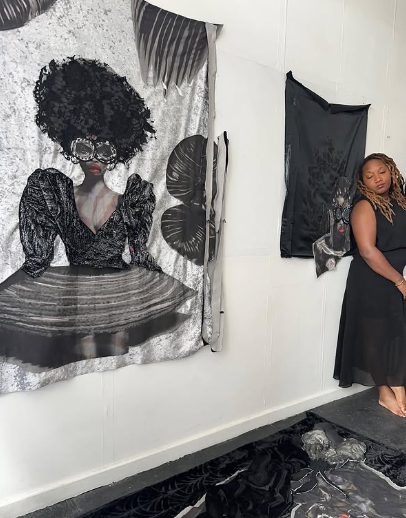
Afrofuturism naturally surfaces in her work. “For me, Afrofuturism is a reimagining of Black existence beyond imposed limitations, It’s about envisioning futures where our stories, bodies, and cultures are central, not erased. It’s not just about the future, but about reclaiming time—past, present, and what’s to come.”
Her preferred medium of creating art—collage, mirrors how memory itself works. “My entire practice is an exercise in collage. It’s how my brain works, Collage allows me to piece together fragments, much like how memory functions. Each layer holds a story, an emotion, a moment in time. The process of cutting, layering, and assembling mirrors how we reconstruct ourselves from experience.”
That storytelling impulse extends to everything she does, whether painting, podcasting, or teaching. “Storytelling is the heart of everything I do,” she says. “It’s about building emotional bridges, helping others see themselves, their histories, and their potential reflected in the work.”
Her participation in When We See Us: A Century of Black Figuration in Painting—a touring exhibition across South Africa, Switzerland, Belgium, and Sweden was a full-circle moment. “It felt like coming home,” she recalls. “To see my work within the context of a larger diasporic community reminded me why I create. It affirmed that art has the power to bring people together.”
Balancing her roles as creative director and visual artist comes naturally. “They absolutely overlap, Both roles are about shaping experiences and guiding people through ideas. One is conceptual, the other more intuitive—but together, they create balance.”
Now based in Manchester, Gherdai’s understanding of diaspora continues to evolve. “Living in Manchester has deepened my understanding of diaspora as both distance and connection. My work often reflects a dialogue between here and elsewhere. I think of diaspora as a constellation—scattered but connected—and my art is a way of mapping those points.”
Lately, her focus has turned to joy—“joy as resistance, joy as rest, joy as reclamation.” She’s exploring new ways to merge art, sound, and wellness into immersive experiences. Still, her intention remains the same: to create connection. “I hope people leave my work with a sense of remembrance and possibility, That they feel connected to something larger than themselves. My wish is that my work sparks reflection, healing, and hope—that it reminds people of who they are, and who they can become.”
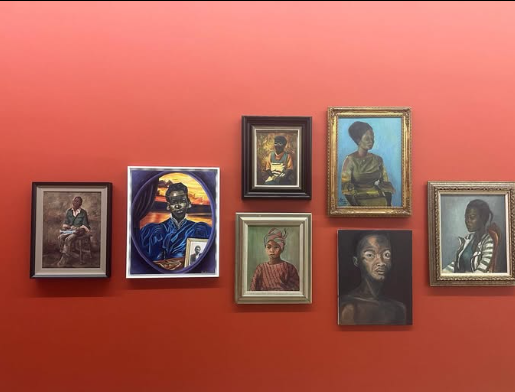
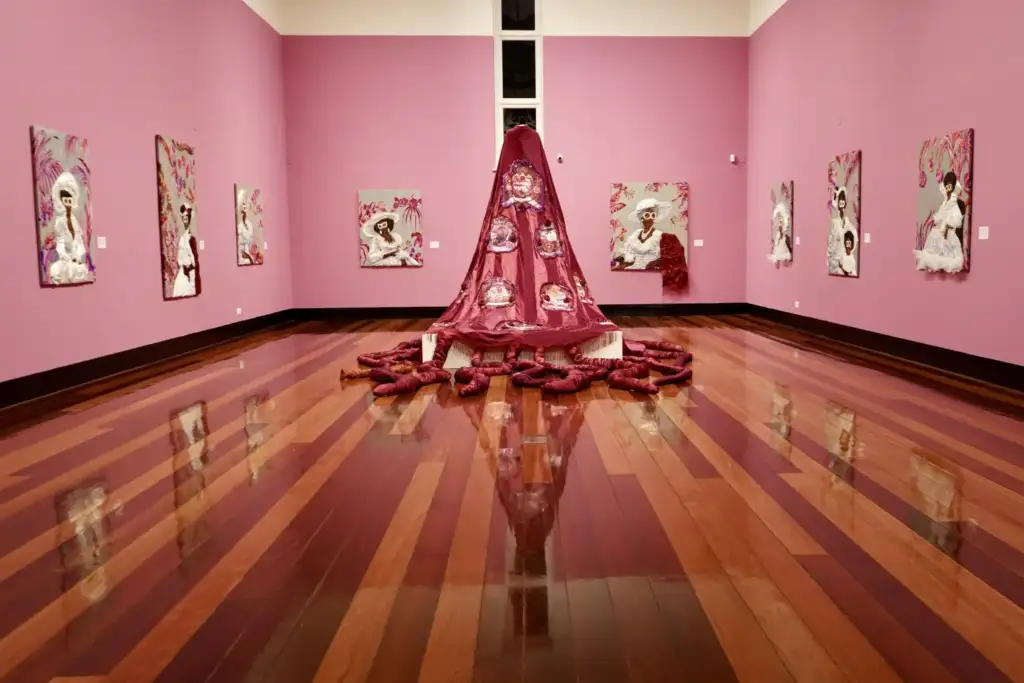
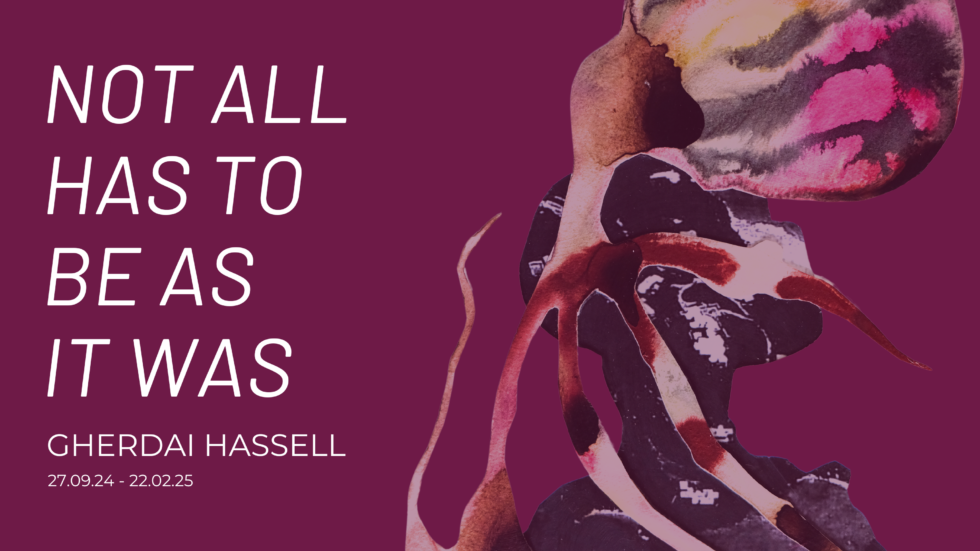
Explore Gherdai Hassel’s Exhibition
Read more about KLAT Awards Here
Join the KLAT Awards Mailing List
Written by Angel Joanne Okonkwo


